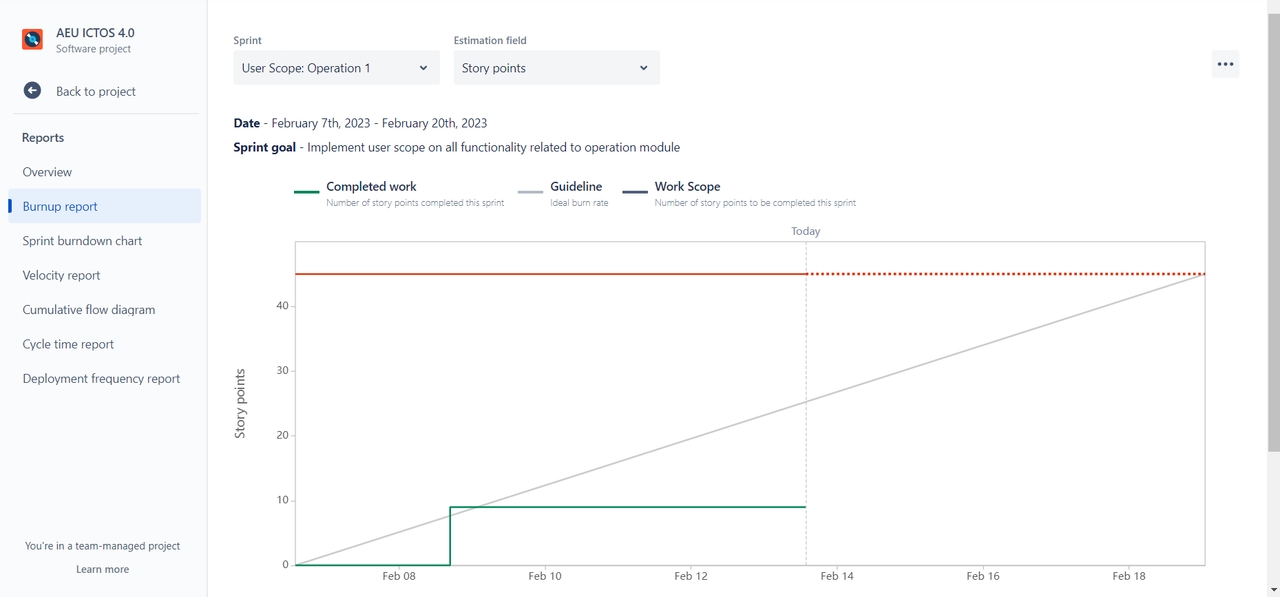Sprint Burn-Up
What is a sprint Burn-up chart?
A burnup chart displays the progress made during each sprint toward the target line, which represents the total amount of work in a release. The graphic's horizontal and vertical dimensions match those of the release burndown chart exactly.
The team displays how much work was accomplished throughout each sprint at its conclusion. After several sprints, a line linking these spots might be used to represent the team's anticipated velocity range. The team should also map out how much scope they want to finish for the release. Throughout the release, it could fluctuate or stay the same. Changes to scope are seen by a change in the scope target line, which is the main benefit of a burnup chart versus a burndown chart.

Who are involved in structuring a burn-up chart?
Scrum Team
Stakeholders
Last updated